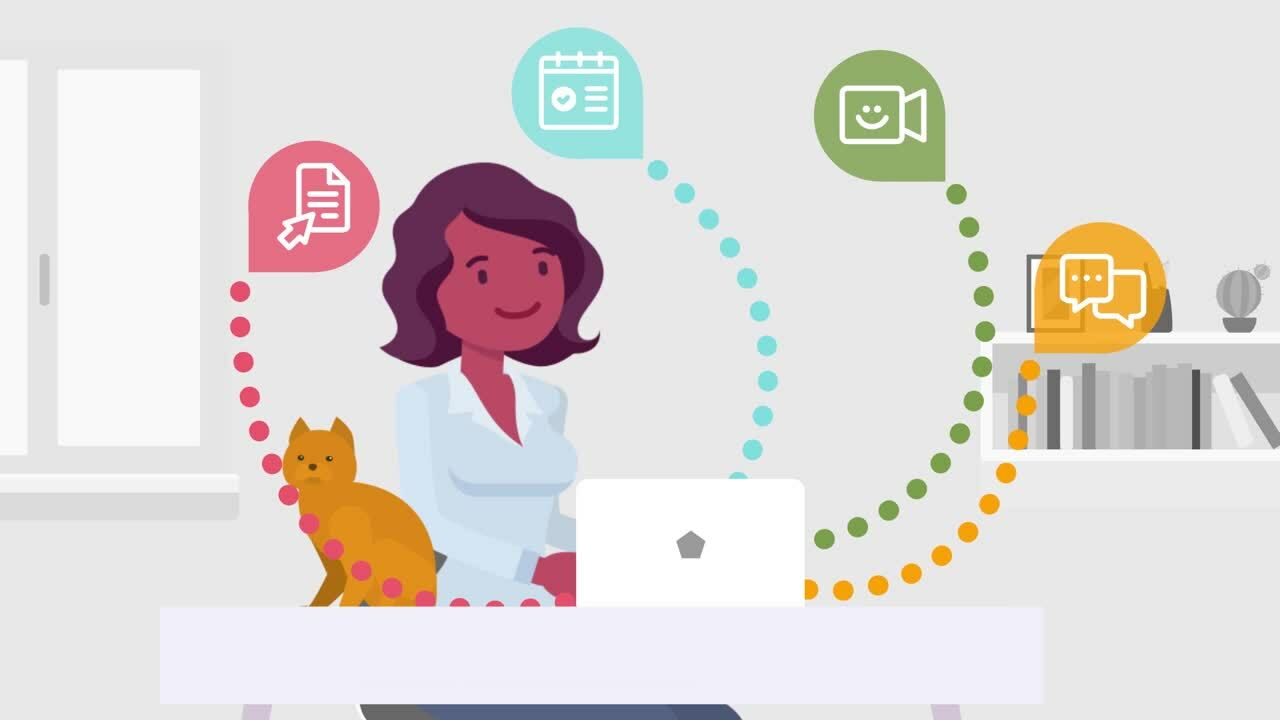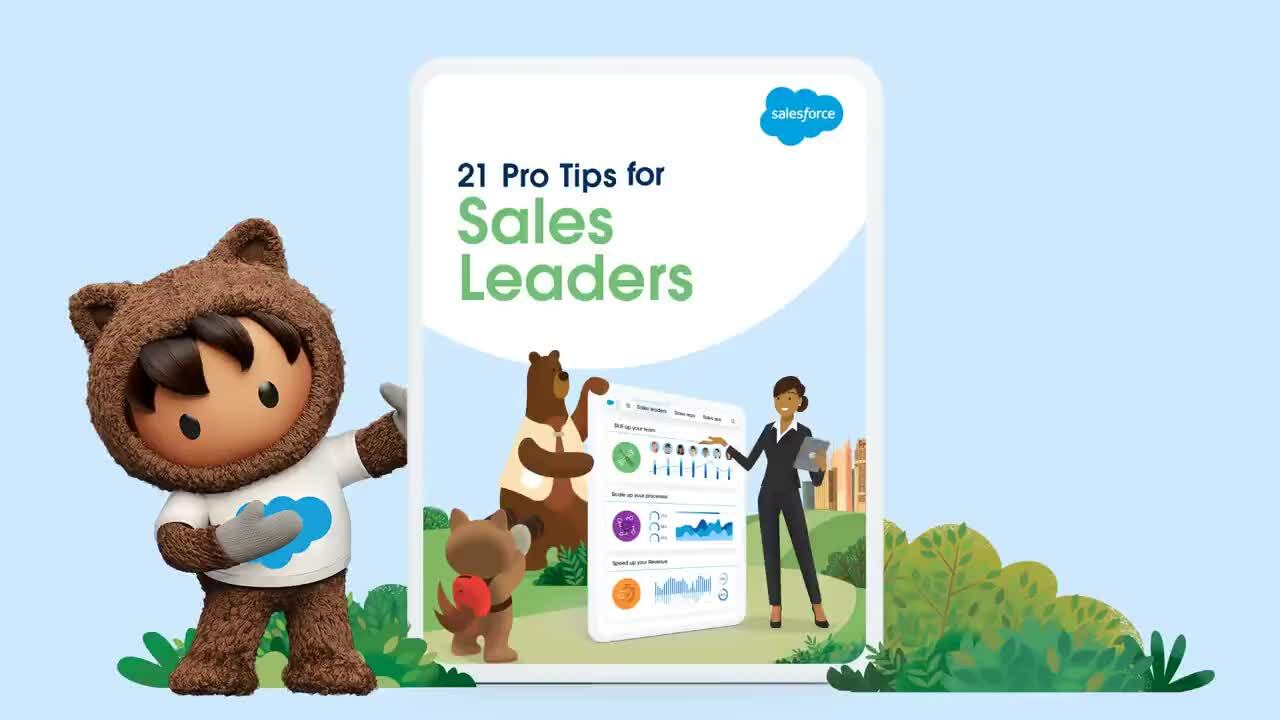Ah, that classic tritone ding. For the 21st-century workforce the familiar Slack notification sound has become shorthand for many things. A team member celebrating a major deal closing. A supervisor giving some last-minute encouragement before a make-or-break meeting. And sometimes, just colleagues arranging where to grab lunch together or what time to check in for a virtual Friday after work catch up. These days, it represents the future of how we work and how we grow.
Slack is seen by most as a tool to communicate, and it still is. But now it’s also a tool to close deals faster. Find out how Slack is being used to rewrite the sales playbook.
1. Cut out conversation-killing email and talk with customers in a real-time #buyer channel instead
What: Slack Connect allows reps to move conversations with customers, partners, and vendors out of email and into Slack. You can create a dedicated Slack channel for each buyer, choose the option to share that channel externally, and send the buyer an invite link to join. All of the magic happens in one place instead of in unending email threads.
Why: Email is the new snail mail. The immediacy of Slack communication mimics the natural flow of in-person conversation. Similar to texting and instant messaging, it creates more genuine connections according to industry research. There’s also the added benefit of being able to easily share white papers, demo recordings, and other insights right in a chat. With a simple “@” mention, you can address concerns right away and lessen overall response time. This shortens the sales cycle.
An IDC study revealed businesses that implemented Slack as a sales tool were able to respond to a sales lead 21% faster. That ease of communication can make the difference between struggling to book a meeting and finally closing that deal.
How: Let’s say a buyer has a question about implementation time. Instead of playing a game of email tennis with a bunch of different stakeholders — an asynchronous way of communicating that eats up time — you can loop in the right technical expert in Slack within minutes. Need someone who can provide more detailed answers on use cases? Tag a product expert. Just needing to strengthen rapport? Tag an executive sponsor. No “just circling back on my previous email” required.
Slack Connect brings customers and partners into the sales cycle so you can easily check on progress, catch potential blockers and stay ahead of upcoming renewals. Slack bots can even scale your customer outreach, allowing you to do them en masse for smaller accounts.

2. Make onboarding reps a breeze with #new-hire tools
What: Before a rep’s first day, invite them to join a #new-hire Slack channel where they can use the chat for all onboarding questions instead of email. If your company is large, you can even create different Slack channels for cohorts onboarding on different dates (e.g. #new-hire-July2021). Ask them to write a brief introduction and get acquainted with other newbies. Most importantly, provide all onboarding info in this channel. Need day one materials? Want an onboarding buddy? Don’t know how to enroll in benefits? Everything can be found here.
Why: Imagine you’re a sales development representative (SDR). It’s your first day on the job and you’re just getting your feet wet. The onboarding process is spread across documents on different platforms, resources in different inboxes, and known only to specific people. In short, it’s siloed and utterly overwhelming. With a single workspace for all onboarding materials, you can ramp up people faster. Not to mention that creating a channel for new hires gives everyone the benefit of seeing other people’s questions and saves HR teams the extra workload of answering repeat questions.
Once new reps are up to speed and ready to venture out onto the virtual sales floor, they’ll find everything they need to do their jobs within Slack. They’ll also have visibility into historical account activity, aka they’ll know what they’re walking into when they inherit accounts. You can even use a CRM integration to sync sales data so reps no longer have to switch back and forth between systems.
This makes early training a cinch. The threat of the productivity-killing “frankenstack,” where various project systems are haphazardly sewn together, is eliminated. Slack alerts can help you prioritise the right deals as you prep for meetings by providing insights from Sales Cloud. The less time you spend digging for information, the quicker you can land your very first sale. Companies with a Slack integration had a 15% faster sales cycle on average and 13% more deals closed.
How: Slack can optimise and, frankly, humanise the employee experience, leading to less turnover and better-prepared sellers. New reps can learn how to be successful based on others’ wins, benefitting from peer-to-peer learning. They’ll also build rapport with their fellow teammates, establishing a company culture even virtually.
As visual communication and collaboration platform, Canva, scaled rapidly and globally with the roll out of a purpose-built enterprise offering, it more than doubled its workforce in under a year. It’s swift growth over the period of the pandemic involved onboarding employees remotely – a process for which Slack was invaluable.
“We initially thought we’d be doing things like sending our US hires to Sydney for onboarding, but everything changed overnight and there was a lot of adapting, improvising, and overcoming,” said John Eitel, Vice President of Sales, North America at Canva.
3. Create specific #opportunity Slack spaces so you can close deals as a team
What: Selling is a team sport, so whip up Slack channels to collaborate with cross-functional team members on important opportunities. These digital “deal rooms” allow team members to swarm around customer needs in order to drive more deals forward, faster. Now, it’s easy for everyone to stay up to date on a deal’s stage and activity, and to work together on next steps to keep things on track. Winning deals is now a team orchestration instead of a solo effort. Plus, you can create a #winning channel where employees gather to pop (emoji) bottles and congratulate each other after a major close.
Further to this end, Slack recently launched a new Huddles feature that allows group audio within a channel. People can quickly hop in and out of an audio conversation without having to schedule a formal video chat while still sharing files and screens. This aligns with research from Yale that shows phone calls create an even stronger empathetic response than video calling. The screen-sharing capabilities also allow everyone to feel like they’re in the office standing over a monitor, hashing out last-minute decisions.
Why: No person is an island and no rep closes a deal on their own. If a seller is facing a hurdle and they’re not able to pull in the right person quickly, it negatively impacts credibility, delays decision-making, and ultimately slows down the sales cycle. When teams are able to move as a unit, revenue grows.
Slack enables sellers to not just talk to each other better but to talk to other departments better, tearing down the walls that exist between sales and marketing, engineering, finance, legal, product, or customer success — all the key players needed to get the deal done! This empowers sales organisations to act on customer feedback faster, passing along valuable input to the product teams. One hundred percent of sales leaders surveyed in an IDC study agreed that Slack helped them better understand and work with non-sales teams.
How: At Canva, Slack enabled the creation of collaboration and support networks so teams are not siloed.
Global and regional team channels and a #sales-support channel mean teams can share problems and get solutions quickly, as well as participate in conversations about #product-development and shout out to team members when it’s time to celebrate wins and give #kudos.
And collaboration isn’t just internal. Canva is leveraging Slack to work with people outside the business including those who took up a product free trial during the pandemic.
So, are you ready for #next-steps?
When you really drill down, Slack is a bridge builder. It closes the gaps between sellers and buyers, sellers and marketers, and sellers and other sellers. Slack helps to transform a CRM from just the place where you keep information to the place where you engage, learn, and ultimately win. On virtual sales floors where reps are moving with ever-increasing agility, Slack positions teams to drive growth from anywhere.
Hear more about how Slack is changing the way sales reps drive sales on Salesforce+.

























